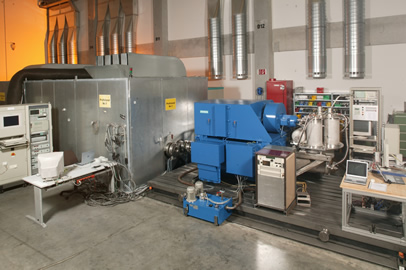Aug 16 2005
The world's first generator with high-temperature superconductors (HTS) has been successfully put into operation in the Siemens AG systems testing facility in Nuremberg. The generator outputs around 4000 kVA at 3600 r.p.m. and is presently undergoing comprehensive tests. The aim is to verify its suitability for use – for example, on ships. Here, the savings potential of the low-loss HTS technology is considerable, especially for all-electric ships. The project is being sponsored by the Federal Ministry for Education and Research (BMBF = Bundesministerium für Bildung und Forschung). Germanischer Lloyd is following the progress of the project, which also involves testing the generator with regard to the requirements relating to classification regulations.

The use of HTS generators in mobile installations for generating electrical energy has many advantages. The generator is almost half the weight and has half the volume of conventional systems. The practically no-loss method of HTS winding excitation and the copper stator air-gap winding, which has no iron teeth, result in a substantial reduction in power losses. This leads to a considerable improvement in electrical efficiency. Due to the synchronous longitudinal reactance, which is much smaller than that of conventional machines, a higher level of electrical stability and better reactive-power capacity can be achieved. Moreover, the HTS generator enables greater voltage stability in the event of transient sudden load variations.
HTS systems are therefore especially of interest for applications in isolated power systems such as those found on board ships. New cruise-ships today are almost all designed as all-electric ships, on which, for example, gas-turbine sets generate up to 70 MW of electrical energy. Around a third of the energy is consumed by hotel loads and two thirds by the electrical propeller propulsion system. In future, the use of HTS technology could reduce the amount of space needed for power generation even further and significantly reduce the energy costs on board.
The new synchronous generator with an HTS winding in the rotor is a joint development of Siemens Corporate Technology (CT) and the Siemens Industrial Solutions and Services (I&S) and Automation and Drives (A&D) Groups. The HTS wire comes from European Advanced Superconductors GmbH & Co. KG (EAS), Hanau, one of the world's leading manufacturers and developers of superconductors.
When the new 4000 kVA synchronous machine was being designed, the experience gained during long-term tests of the superconductive 400 kW demonstrator motor developed between 1999 and 2001 was combined with Siemens' expertise in the field of large drives.
http://www.siemens.com/